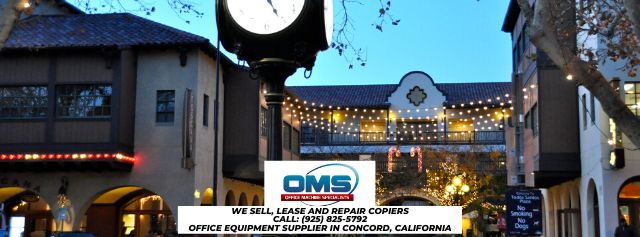Office Machine Services and Sales Solutions
Antioch (formerly East Antioch, Smith’s Landing, and Marsh’s Landing) is the second largest city in Contra Costa County, California , USA. Located in the East Bay area of the San Francisco Bay Area in the San Joaquin-Sacramento River Delta. The population of the city was 102,372 in the 2010 census and is expected to be 111,502 in 2019.
Like other early settlements, Antioch has undergone several changes. The settlers arrived at the foot of what is now F Street on September 16, 1850. They camped under the oaks in tents where they could see the herds of tule elk and antelope feeding on the grass. Several wrote about shooting a 300-pound animal to feed the new arrivals.
Captain Kimball established the site of the early town and laid the town in blocks. He has given lots and blocks to some organizations and individuals, all of whom have entangled in 17 years of land disputes. The settlers planned their homes from their camp site. Five houses were constructed the first fall and winter, running west of “F” Street landing along what is now Second St. Most of them were Captain Kimball’s, situated on the southeast corner of what is now Third and F Street. Later buildings, constructed in the 2nd and 3rd year of town growth, stretched eastward to the intersection of the Sixth and A Streets of today.
In 1850, the settlers planted their fields only to be hit by one of the worst droughts ever recorded in California. They were forced to travel to the Kirker Pass area, where they cut the wild oat grass and brought it to San Francisco, where they earned $60 a ton. They purchased much-needed supplies to help keep them back until they were harvested in 1852. While some of the original Antiochian settlers decided to remain in the Kirker Pass area, most of them returned to their homes in Antioch.
On July 4, 1851, the pioneers had a picnic at Reverend Smith ‘s home on a bluff overlooking the San Joaquin River. It was on this occasion that the thirty-fourty people who were present chose the name of Antioch for their new group. It was named after the Antioch of Syria, and in memory of Reverend Joseph Smith, W.W. ‘s brother. Smith, who died in this area in February of 1850.
From 1850 to 1880, the river was the only means of transport and contact with the outside world. Antioch boasted a frontage of three miles on the river, with 40-foot deep water three quarters of a mile wide to accommodate shipping.
Spanish land grants also caused a great deal of trouble for the settlers of Antioch. W.W. Smith spent years in court before being given possession of his claim in November 1869. Captain Kimball, after seven years in court, considered the Los Medanos claim to be honoured in 1872. He was forced to buy back some of his original estate, primarily his home block (E to F and Third to Fourth Streets). During the years in jail, the Captain bought and stayed on Kimball Island, where he set up a dairy and asparagus culture operated by his son Edgar. Later, on 16 March 1884, Edgar became the father of the first twins born in Antioch.
At the beginning of the 1870s, there was talk of splitting Contra Costa County and naming the new county of Montezuma, with Antioch as the county seat. With the arrival of the now Southern Pacific Railroad, Antioch was informed that it would take less than two hours to fly to Martinez. The idea of a county division has been scrapped.
Some of the business projects thrived, as with any new culture, while others ignited, but soon died out. Antioch wasn’t any different. From time to time, a variety of early industries and business enterprises were founded in Antioch, including brick kilns, coal mining, copper smelter, several pottery and distillery. In 1889 Mr. Keeney founded a paper mill on the west side of L Street, just north of Fourth Street. This company has been run by Fibreboard for a number of years. The place is now the Antioch Police Department.
With its incorporation in February 1872, the town started to grow in a more organized manner. The organisation of the fire and police departments gave people a sense of security, with more time to devote to nurturing a stable, growing community.
The city limits were the San Joaquin River at a low tide in the north, A Street in the east, Tenth Street in the south, and O Street in the west. This was great until people began moving south of Tenth Street about 1900, believing they were still in Antioch. The boundaries were eventually changed in the 1930’s when it was brought to the attention of the City Council that the initial boundaries had never been changed or documented in the county records.
The city of Antioch, California prides itself to house these must-see places of interest:
- Black Diamond Mines Regional Preserve
- Roswell Butler Hard House
- Shannon-Williamson Ranch
- El Campanil Theatre
- Arts and Cultural Foundation of Antioch
- Antioch Historical Society Museum
- Lynn House Gallery
- Rivertown Art Center
- Contra Costa County Fairgrounds
All of these wonderful landmarks are located just a short distance from our location at 1091 Shary Circle in Concord, California! Stop by for a visit anytime!
